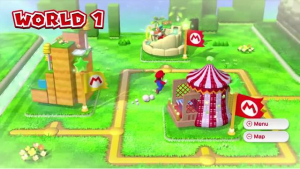Video games feature different levels of complexity based on the genre and design, and it can be very hard to teach someone how to play a title if it’s their first time. Thinking about this more, I’ve come up with a simple hierarchy of how designers can help design the flow of a game or a tutorial to teach someone the game mechanics effectively.
Before we begin, it’s important to note that what we’re going to talk about is a general solution that should fit most games and game design; there will always be exceptions to the rules.
The problem with game designers developing tutorials for new players is the fact that it’s hard to figure out how to teach someone when you know everything already. Many games have trouble with either hitting the player over the head with everything at once, or leaving so much not explained that the player has no idea how to improve.
Unfortunately, you can’t just ask someone who hasn’t played your game about what they are having trouble with learning, as they have no idea what questions to ask. As I thought about my own thought process when it comes to learning games, it’s built upon asking three questions.
1. What am I Doing?
The first one should be obvious: What is the player doing in this game? This question is one that should be a given for any video game ever made; if you can’t explain to someone the rules of your game, then you have certainly failed.
This is the surface layer when it comes to understanding the game: The designer should be able to explain the basic rules of the title along with the controls. At this point, you need to assume that you have people who have never played your game or the genre before, and it’s important to design your lesson and tutorial structure appropriately.
You should be able to properly explain to someone how your game works and what they need to do to start playing the game. This part is very short, but it takes us to the next and longer question to answer.
2. How do I Do This?
The what of a video game is very simple and most games can answer it with a single cut scene before the game starts. This question however is a lot harder and begins to teach someone about how the game mechanics work. At this point, you should be building your game’s structure or tutorial flow around teaching the player the mechanics in order of importance.
This is where developers can screw up their tutorial by revealing too much information; don’t show me how to turn on window wipers in a driving game at the same time I’m trying to learn how to start the car.
Action games tend to work the best at presenting information, because of how the level design can be set up to teach the player how the mechanics work. I’ve said this example before, but it’s a 1:1 relationship between pushing a button and seeing the action unfold. In an abstracted or strategy game, you can’t just push a button that says “Fix energy problems.”
With the abstraction at work, you need to set up better lessons in order for someone to learn how your mechanics work.
Often, this is why we see a lot of strategy games go with tutorials that are built around a custom scenario to show the exact mechanic or lesson off. However, that takes us to the final point and where most developers will usually fail on.
3. Why/When am I doing this?
Knowing how a game works and what the commands do are required by any game, but there’s still one more lesson left: Applying the mechanics to playing the game.
This is the point where the player takes the steps towards mastering the game and understanding the design of it. There is a big difference between knowing the commands to increase tax income coming in, and the reasoning and thought process about why the player should do this.
Going back to the previous point about custom scenarios, this is the main reason why they are poor at teaching the player. If you show the player how to do something in a scenario separate from the main game, then how will they learn when they will need that information when playing the game for real?
I can’t count the number of strategy games I’ve played that have failed at this point. Another problem is if you give the player a sandbox to learn the rules and systems from. Again, if the player is not seeing these mechanics while playing the game for real, then they’re not going to learn how to apply them. A big example of this would be my attempt at learning how to play Crusader Kings two and utterly failing after the in-game tutorial.
This is another point where action games are easier to learn than abstracted ones. Because of the relationship between the player’s actions and the level design, it’s very easy to see how one impacts the other; nobody asks, “Why does Mario jump over pits?”
One of the hardest designs when it comes to teaching someone is games with open-ended mechanics, or games that are built as a collection of systems and mechanics for the player to figure out. There are two problems. First, because the player is free to experiment with the mechanics it becomes very difficult to know the player’s skill level at any given time. The other point is if the player decides to skip a lesson or fails to learn one part of your game. Because everything builds on top of each other, failing to learn one part of the design will hurt the player’s chances of continuing to learn.

Understanding the when/why is the point of mastery and being able to make full use of the game mechanics
I had that issue with trying to learn Spacechem and Infinifactory; once I started to fall behind in terms of figuring out the rules and the mechanics, progression came to a standstill. Some of the best ways to teach the player when it comes to open-ended design is to gate mechanics and systems behind the progression curve.
In the game Banjo Kazooie Nuts and Bolts, Rare intentionally limited the player’s access to parts instead of giving them everything at once.
On one hand, this made it so that some levels were impossible to complete at their highest challenge when you first arrived, but it also allowed someone to start off small before getting to the complicated stuff.
You can also do the same thing by having an in-game tech tree; limiting the player’s access to advanced items until they are able to get and use the basic stuff.
One final tip for designers who are building games around abstracted systems has to do with let’s plays. Let’s Plays have become a great way to learn game mechanics, because someone can watch how someone plays the game and see the mechanics utilized correctly. If you can frame your lessons around that kind of lesson plan, or even create your own video to show the game off, that can help when it comes to explaining abstracted rules and systems.
Mastering a Game:
Figuring out the what, how and why is critical to understanding and mastering a game. Knowing how to press buttons is not enough, the player needs to know when to do something and why. These three questions are a good foundation when trying to understand how someone new will approach your title, and being able to explain them through tutorial, level design or simply the mechanic itself; is another hallmark of a great designer and game.
If you enjoyed this post, please consider donating to the Patreon Campaign to help keep Game-Wisdom ad free. Any donations will help me to continue putting out great content.



